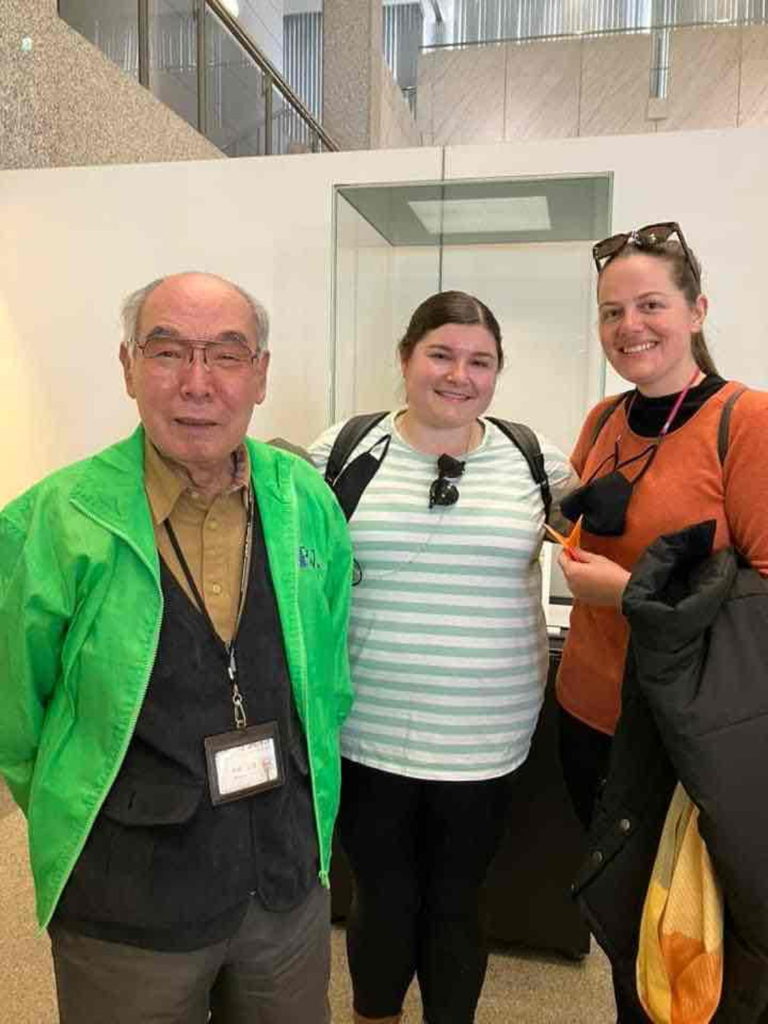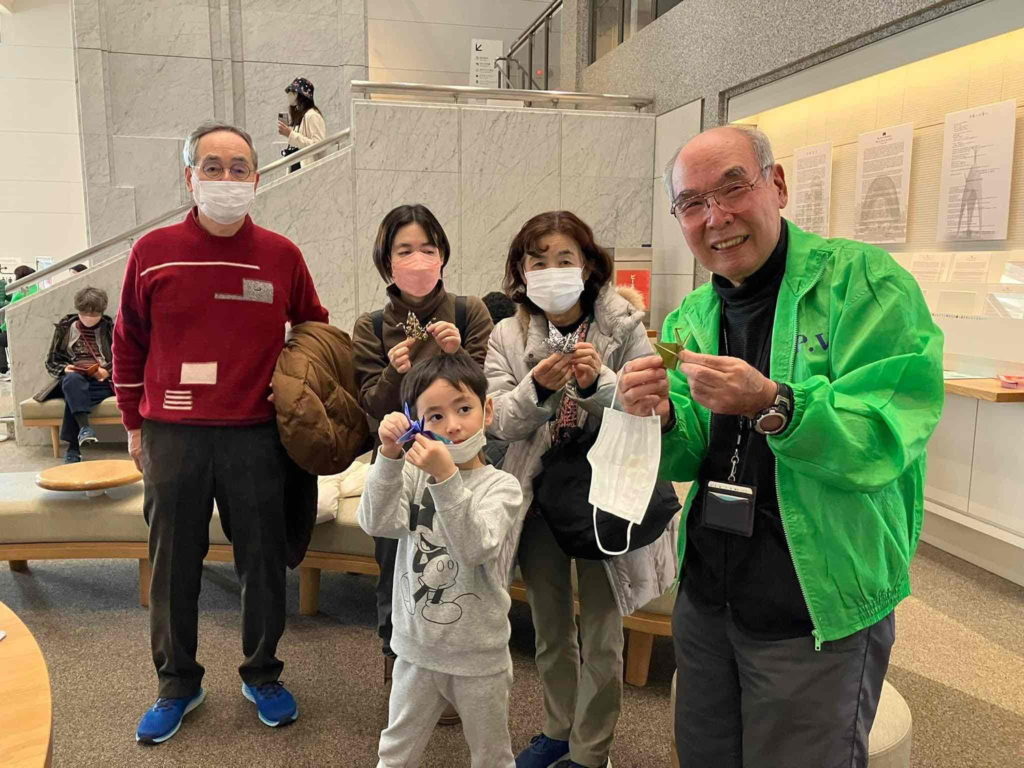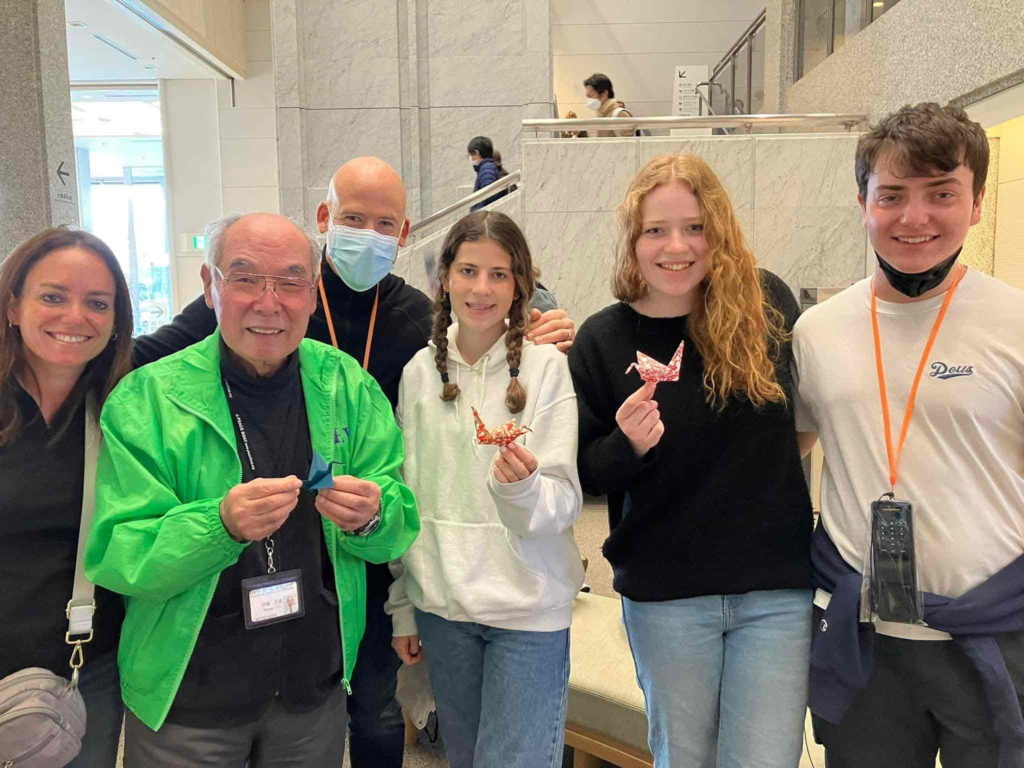Masao Ito
From “Never Forget” to “Never Again”
4. Becoming a Hiroshima Peace Volunteer
After I retired, the pastor of Mitaki Green Chapel, where I attended, showed me an article about the recruitment of Hiroshima Peace Volunteers and said, “Every day is Sunday after you retire, isn’t it? Since you are an A-bomb survivor, why don’t you do something like this?” Right away, I visited the Hiroshima Peace Memorial Museum. There, the person in charge asked me, “Since you are an A-bomb survivor, why don’t you share your A-bomb testimony?” I declined, saying, “Even though I am an A-bomb survivor, I was only four and a half years old at the time of the bombing, and I hardly have any memory of it.” So instead, I applied to become a Peace Volunteer who gives guided tours in the Peace Memorial Museum and around the Peace Memorial Park. For about a year, I went to the Peace Memorial Museum once a month for training and learned about the reality of the atomic bombing, the exhibits in the Museum, and watched video testimonies of A-bomb survivors. Since April, 2007 to the present day, I have been a Thursday volunteer.
However, there was one thing that initially bothered me. It was the words inscribed on the Cenotaph for the A-Bomb Victims, “Let all the souls here rest in peace for we shall not repeat the evil.” Back then, I looked at those inscribed words with a bitter feeling that the hibakusha would never be able to rest in peace unless revenge was taken on the United States for dropping the atomic bomb. I thought the inscription should instead say, “You must be frustrated. We will take revenge, so please rest in peace.”
Then one day, a group of U.S. soldiers stationed in Iwakuni came to the Peace Memorial Museum. After going through the Museum, some of them said with tears in their eyes, “We were taught that the atomic bombings brought an early end to the war and saved a million young American lives, and that’s what we ourselves believed. But after seeing the Museum, we realized for the first time that our own country dropped such a devastating bomb.” From them I learned that there are those, even among Americans, who could shed tears because they feel sorry for dropping the atomic bomb. Since then, I have been told similar things by a number of Americans.
There were also Americans who worked for hibakusha after the atomic bombing. Norman Cousins helped the A-bomb orphans through the Moral Adoption program. He was also instrumental in bringing young women with keloid scars on their faces, known as Hiroshima Maidens, to the United States to receive treatment. Floyd Schmoe also came to Hiroshima a number of times and built 21 houses for A-bomb survivors who lost their homes in the atomic bombing. And even though this is not directly related to hibakusha, soldiers from Iwakuni often volunteer at the Garden of Light, House of Providence, a children’s home in Hatsukaichi.
I remembered an experience shared by a hibakusha who told me about how her heart had changed after giving her A-bomb testimony in the U.S. and was treated so well by the host families where she stayed. I used to think that retaliation was the only way to atone for the loss of hibakushas’ lives, but seeing the way Americans treated with love the Japanese people who had once been their enemy gradually led to my heart being changed. And I finally felt like I understood the meaning of the biblical words I had thrown at the wall in anger during my stay at the hospital, “…love your enemies and pray for those who persecute you…” A cycle of retaliation will never bring about peace. I realized that what I really needed to hate was not the American people, but war itself. If there had been no war, then nuclear weapons would never have been used. The phrase should not be “Never forget!” but “Never again!”
In 2012, Hiroshima City launched a project to train people to pass on the legacy of the hibakusha. As A-bomb survivors age and fewer people are able to speak about their experiences, this project trains people who will listen to the experiences of hibakusha and pass on their experiences on their behalf. I have become a Legacy Successor of Miyoko Matsubara and Shunichiro Arai. I am now sharing what I remember about my A-bomb experience with those of Ms. Matsubara and Mr. Arai.




